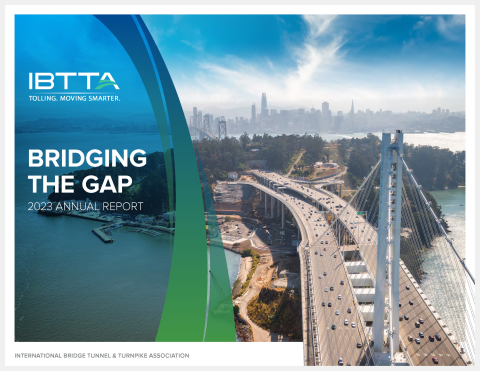- Home
- Extreme Weather Creates New Challenges For Tolling
Stories
Extreme Weather Creates New Challenges for Tolling


With scorching summer heat hitting an unheard-of June high of 45.9°C/114.6°F in a town in France last week and warmer temperatures in many parts of the U.S., extreme weather is beginning to change some of the bedrock assumptions on which toll roads and other surface transportation infrastructure were built.
With highway surfaces degrading, rail lines buckling, and wildfires raging in the heat, there’s far too much evidence that the impacts climate scientists have been predicting for years are now upon us. And that’s just months after highways in Austria scrambled to cope with seven feet of snow over a 10-day span, in a region that normally receives seven feet in an entire winter season.
At IBTTA’s recent Maintenance & Roadway Operations Workshop in Norfolk, VA, the experience prompted questions about how a tolling agency accommodates the sudden demand on staff and equipment—and whether Austria’s version of the “snowpocalypse” was a one-off or a new normal. The answers may not be what tolling operators would hope for.
The science is in, and it shows that this wacky weather—what Texas Tech climate scientist Katharine Hayhoe calls “global weirding”—will be a feature, not a bug, for anyone who manages highway infrastructure. There’s detailed analysis to explain the specific weather dynamics, and the science is sound. The bottom line is that, even if you buy the extremely tenuous line that climate change is a hoax, it’ll be up to every highway infrastructure manager to deal with the front-line reality.
The solutions to the problem are known and achievable. In highway transportation, an unpredictable future means the financial stability, operational agility, and relentless innovation that tolling agencies bring to the table will be more important than ever. As extreme conditions make highways more expensive to operate and maintain, and day-to-day revenues more difficult to anticipate, it will become ever more crucial to manage highway demand, and to generate steady revenue for the system as a whole.
Europe’s Latest Weather Report
Europe’s record-shattering early heat wave was a prelude to what may turn out to be the hottest summer on record. But it’s not the first, nor is high heat the only front-line impact to expect as atmospheric greenhouse gas concentrations rise higher than they’ve been in as long as the human species has been on Earth.
Think of the hundreds of heat records that were exceeded just last summer.
Look back on the killer hurricanes that devastated Houston and Puerto Rico, and this year’s epic flooding in the Midwest.
Recall the California wildfire last year that literally burned Paradise to the ground.
Think back to tolling agencies’ experience with Superstorm Sandy when it slammed into New York and New Jersey in October 2013. “What we saw unfold with Sandy was something we’d never seen for years, or maybe in two or three generations,” recalled one shell-shocked tolling executive from New York State, speaking months later at IBTTA’s forum on the Sandy recovery effort. “I had this real sense that this was a life-changing storm,” added an executive from New Jersey.”
The Rise of Climate Attribution Studies
Not every weather disaster is automatically attributable to climate change. For years, climate scientists would say the link between climate change and severe weather was like loading the dice: It might not be behind every event, but makes more frequent, severe, longer-lasting storms and heat waves more likely.
The researchers would draw an analogy to a Major League Baseball player who may or may not be using steroids. If he hits just one 550-foot home run, it might be nothing more than a good swing. If he hits more than 60 homers in a season, it’s time for some random blood testing.
But lately, the science is getting better, the modelling more finely-tuned. Climate attribution studies have arrived as a recognized body of research linking specific disasters to the wider trend. In France last week, a team from the World Weather Attribution research group completed an “on-the-fly” attribution study, concluding that climate change made the heat wave five times more likely.
Climate Change Adaption Means Reducing Emissions
That line of thought points toward the two branches of climate change response, adaptation and mitigation, where adaptation is about minimizing climate impacts and mitigation means reducing the greenhouse gas pollution at the heart of the problem. Transportation and tolling can make an important contribution on both sides of the ledger.
Adaptation begins with the emergency preparedness and response that is already a core capability for any tolling authority. The rules for a weather disaster are essentially the same as for a multi-vehicle collision, or even the massive volume associated with a major sports event—plan ahead, anticipate all contingencies, assign sufficient staff and resources, pre-position assets where they’ll be most useful, and develop a detailed and flexible enough plan that you can adapt on the fly as conditions change and evolve.
Transportation planners also know that prevention is the best emergency response of all—that’s why tolling agencies emphasize an array of award-winning safety measures, from wrong-way warning systems to “red thumb” campaigns to discourage “intexticated” driving. And when it comes to climate adaptation, it’s clear that mitigation is the new adaptation.
The reality, beyond a certain level of average global warming, the ferocity of climate impacts will be beyond anything that human systems or economies can adapt to. As one measure, the International Labour Organization warned last week that heat stress alone will put the equivalent of 80 million jobs at risk by 2030, at a cost of $2.4 trillion to the global economy. The World Health Organization foresees climate-driven heat stress causing 38,000 extra deaths per year between 2030 and 2050.
All of which adds up to a pragmatic argument for tolling agencies, with finances and operations that rely on stable, predictable, long-term operations, to become champions for a 21st-century transportation system that drastically reduces its carbon emissions.
There’s little mystery about the solutions. Electric vehicle demand is skyrocketing, industrial giants like Siemens are getting serious about electric trucks for freight, and China is funding research on hydrogen as a heavy transport fuel. Tolling agencies like the E-470 Public Highway Authority in Colorado are using renewable energy to power their operations, and a group inspired by green entrepreneur Ray Anderson is turning an old stretch of Georgia highway into a test bed for clean technology.
And as more and more tolling agencies adopt a new “why” for their operations, dedicating themselves to relieving highway congestion and funding public mobility across multiple modes, the industry as a whole can find its place in a future where customers see the need and seize the opportunity to drive less.
We’re on a short timeline, with the Intergovernmental Panel on Climate Change (IPCC) setting a 2030 deadline for humanity to cut global greenhouse gas emissions by 45%. But the IPCC stresses that we have all the knowledge, tools, and technologies we need to hit the target—the last box to check is political will, and the public demand and buy-in to drive drastic action. That means that while the last chapters of the climate change saga are written over the next dozen years, tolling agencies can do their part in educating customers while playing a decisive role in writing them.

Joining IBTTA connects you to a global community of transportation professionals, offering unmatched opportunities for networking, knowledge-sharing, and collaborative innovation in the tolling and transportation sector.
Follow IBTTA on social media for real-time updates on transportation trends and collaborative opportunities.





